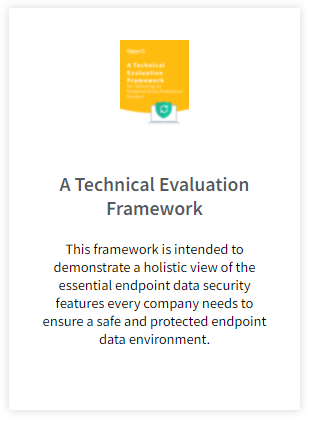The best way to protect yourself, your users and your business against ransomware is by setting up a proactive defence. The ransomware statistics paint a frightening picture for anyone in charge of IT: In Q3 2016 alone, 18 million new malware samples were captured. Source: Panda Labs What that means is that the criminals…
2011 Business Data Loss Statistics Released
The Cibecs 2011 Business Data Loss Survey has been released, revealing what the statistics around business data loss in 2011 were, and uncovering the major IT challenges when it comes to protecting endpoint data (located on company laptops and desktops) and increasing our understanding of where data loss vulnerabilities and risks lie.
“In 2011 over 50% of the 250 companies surveyed had lost business critical data,” says Cibecs CEO, Richard Dewing. “Even more concerning was that 10% of companies stated they would not be able to recover business data if lost – while 37% estimated that business data recovery in their organization would take a day or longer (and up to a month in some cases).”
The survey uncovered that 30% of respondents value the data on their laptop or desktop at over $25 000. Combine the value of business data with the potential reputational risks of losing it and the Corporate Governance requirements of protecting this data and enterprises have a pressing incentive to ensure they employ an effective endpoint data protection solution.
The 2011 Cibecs Data Loss Survey, and the 2011 Data Loss Statistics, reveal a definite void between the reality of data loss and organizations employing working solutions to the problem. 45% of those surveyed found their data backup solution only ‘moderately effective’ while 22% believe their current business data protection is ineffective.
Another interesting data loss statistic was that 60% of companies now use laptops as their primary system, illustrating a definite move towards business data mobility. This mobilization of corporate data increases data loss risks, as well as intensifies possible cyber security threats and unauthorized access to corporate information. Increased user mobility also results in inflated bandwidth costs – with over 67% of companies reporting significantly higher bandwidth and storage costs in 2011.
The Cibecs survey unearthed multiple data loss risks and causes – the majority of companies listing ‘negligence’ as their most common cause of data loss.
One of the key challenges acknowledged by Gartner in storage planning for 2012 is that IT tends to look at user data protection in the traditional sense, meaning from the centre out, instead of from the edge, inward – with the main areas of risk and exposure residing on endpoint user devices such as laptops and desktops.
“It is clear that in 2011, data loss – and specifically – laptop and desktop data loss, has become a definite pain-point for enterprise IT,” says Dewing. “The requirement for effective data protection is more important now than ever before.”
FEATURED POSTS
IT Managers: How to Protect Your Users Against Ransomware
The best way to protect yourself, your users and your business against ransomware is by setting up a proactive defence. The ransomware statistics paint a frightening picture for anyone in charge of IT: In Q3 2016 alone, 18 million new malware samples were captured. Source: Panda Labs What that means is that the criminals…
Cibecs Joins Silicon Valley Top 20
Cibecs Joins Silicon Valley Companies to be Listed on Top 20 Most Promising Storage Solution Providers Cibecs, a leading South African endpoint backup, protection and security solution, has been recognised as one of the 20 Most Promising Storage Solutions by CIO Review. The list, compiled by industry insiders, highlights leading global technology providers that offer effective…
4 Signs You Need a New Endpoint Data Backup Solution
With more workers depending on laptops it is more important than ever to ensure that the work protected and stored on those devices is backed up and protected. Forrester Research says that 45% of corporate executives don’t follow policies for data use and handling. Underlining how at risk almost half of a business’s data actually…











